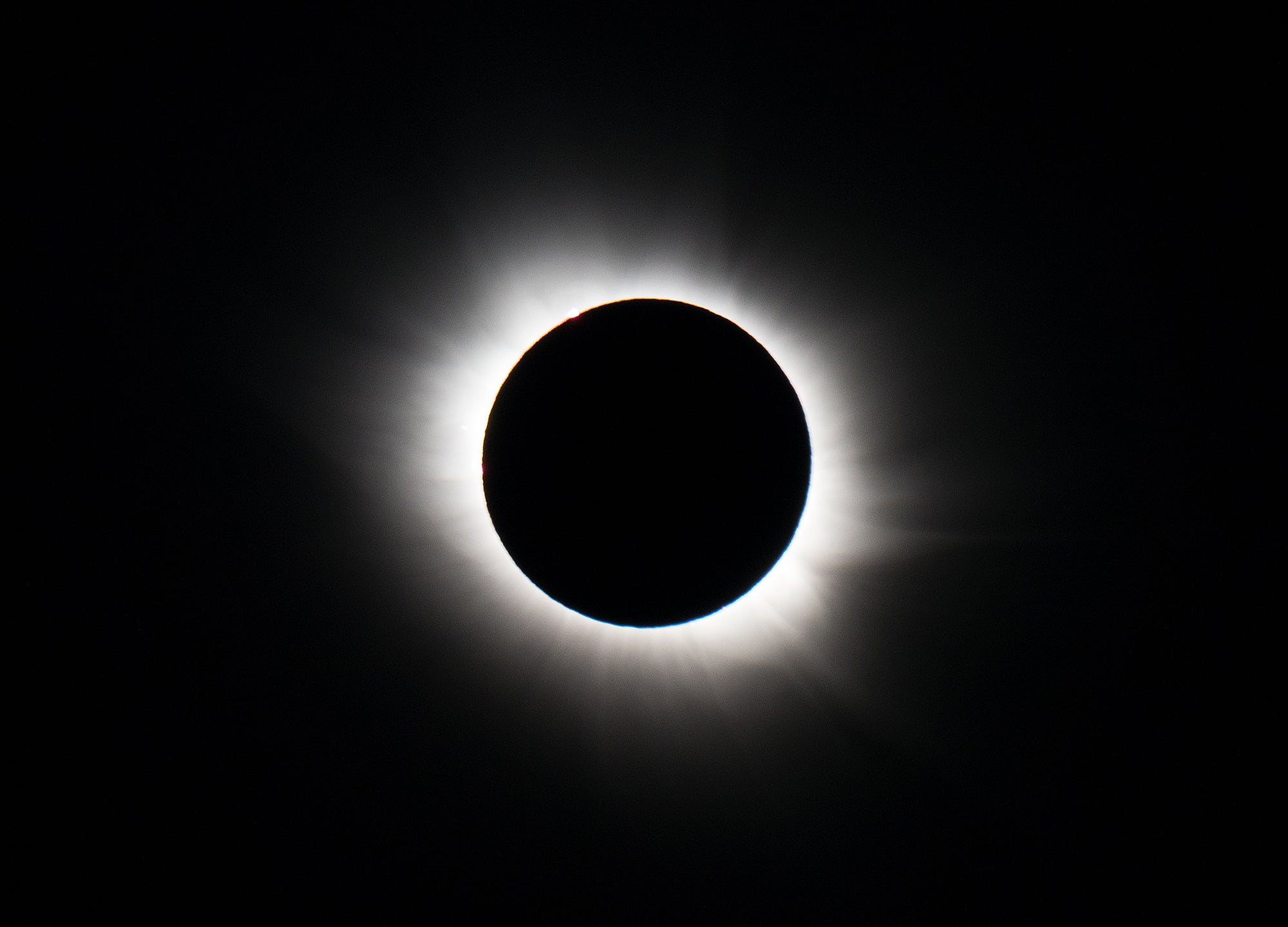If you’re not going to watch the solar eclipse somewhere in its path of totality, you’re setting yourself up for a serious case of FOMO. As you know, people around the country—and not just scientists—are freaking out about this historic moment in time.
Here’s what you should know about witnessing this phenomenon.
WHEN: Monday, August 21, get yourself to the nearest spot in the narrow path of totality, which will sweep the country from Oregon to South Carolina. It starts at 10:15 a.m. on the West Coast and touches its final state on the East Coast at just after 2:36 p.m.
WHAT: An approximately two-minute marvel in which the moon completely blocks the sun. Only the sun’s visible ring, or corona, will blaze against the darkened sky. Geographer and solar eclipse guru Michael Zeiler recently described it on NPR as “if a sunset was compressed from 30 or 40 minutes down to just a few seconds … It’s not completely dark like midnight, but you will see stars and planets pop out in the sky. But your attention will be grabbed by the side of the corona.”
WHY: This cosmic occurrence is so significant because the “friction” of oceanic tides is causing the moon to recede from the Earth by about an inch each year. At some point, as the moon’s disk becomes smaller, a total solar eclipse will never be visible from our planet again.
HOW: While you should never look directly at the sun, it’s especially dangerous during a total eclipse. The best way to protect your eyes but still enjoy the spectacle is to get a pair of reputable viewers that meet the International Standards Organization’s specification for direct solar viewing. These come in cheap cardboard forms, full wraparound plastic glasses or binoculars meant for viewing white light.
Rather than trying to take a photo of the eclipse with your smartphone, which pros say will only yield a disappointing spot of light, try something else to memorialize the unifying moment: Video the reactions of others around you. Capturing humans in total cosmic awe is a clip that will never get old.




